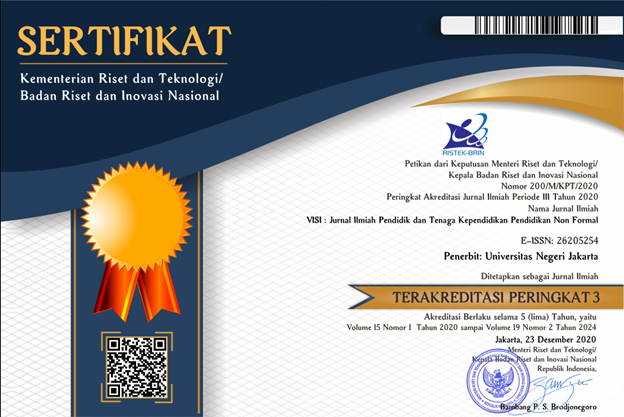Development Of Picture Card Media Based On Science Literacy On Ecosystem Materials
DOI:
https://doi.org/10.21009/JIV.1901.10Keywords:
Picture cards, Science Literacy, EcosystemAbstract
It is known that the science literacy score in Indonesia in PISA (Programe for International Student Assement) which is carried out in 2022 is up 6 positions compared to 2018. However, the score dropped by 13 points. This needs to be improved the quality of education in Indonesia, one of the factors that influence it is the lack of innovation in the use of science literacy-based learning media. The purpose of this study was to determine the characteristics, feasibility, and response to picture card media based on science literacy in grade V elementary school ecosystem materials. The research method used is R&D with the ADDIE model, namely analysis, design, development, implementation, and evaluation. To determine the feasibility of the media, a validation test was carried out by material experts and media experts using validation sheets. From the expert validation test, the material obtained a percentage of 100% with a very decent category. The results of the media test obtained a percentage of 100% with a very decent category. To determine the media response, respondents were filled out questionnaires by teachers and students. The results of students' responses to the media obtained a percentage of 93% in the very good category. While the results of the teacher's response obtained a percentage of 95% with a very good category. This study found that the picture card media based on science literacy ecosystem material is very feasible and very good to be used as a learning medium that can be an idea and motivation for teachers to make learning media innovations. In addition, it can help students in the learning process and increase knowledge related to science literacy skills. Further research can develop picture card media with other subjects and materials.
Downloads
Published
How to Cite
Issue
Section
License
Authors who publish with this Journal agree to the following terms:
- Author retain copyright and grant the journal right of first publication with the work simultaneously licensed under a creative commons attribution licensethat allow others to share the work within an acknowledgement of the work’s authorship and initial publication of this journal.
- Authors are able to enter into separate, additional contractual arrangementfor the non-exclusive distribution of the journal’s published version of the work (e.g. acknowledgement of its initial publication in this journal).
- Authors are permitted and encouraged to post their work online(e.g. in institutional repositories or on their websites) prior to and during the submission process, as it can lead to productive exchanges, as well as earlier and greater citation of published works.
- Users/public use of this website will be licensed to CC BY-NC-SA Creative Commons Attribution-NonCommercial-ShareAlike 4.0 International License









